History of the Mile End District of Montreal (excerpts)
By Christopher Schoofs, May 19931
Read our introduction to this series of documents on the origins of Mile End.
The Mile End district of Montreal has always been a borderland, a land next to, a land in between, a land of passage to other places, historically in many ways a forgotten land. Today it has no single focal point. Its residents cannot define its boundaries or even in fact agree what it is called. St. Lawrence Boulevard might define its eastern boundary or cut through its middle. To many older Italian-Canadians who might call it the “Milen”, it is the area north of the CPR tracks to Jean Talon. To the French Catholics of the neighborhood who might have called it “La Molenne”, it is the area surrounding the church Saint-Enfant-Jesus-du-Mile End facing Lahaye park on St Lawrence Boulevard. If Jewish-Canadians know the name, they will associate it with Mordecai Richler, Duddy Kravitz, and St. Urbain Street. Greek-Canadians may, again if they know the name, associate it with Park Avenue. In fact, today it is an extremely heterogenous neighborhood filled with French and English Canadians, immigrants from around the world, prosperous professionals and the unemployed, students, artists, and workers of all kinds.
[…] By the late 1970s the name “Mile End” was almost forgotten, as many Montrealers believed the area belonged to the working class “Plateau” district to the east, in a curious way reaffirming its origins as a part of Cote-Saint-Louis. However, in the 1980s the term Mile End reasserted itself as more and more residents of the district began to use it to contrast the area to the Plateau to the east and wealthy Outremont to the west.
[… Mount Royal A]venue is located slightly more than one mile north of the last building that the 1824 map shows as part of the city. At some point between 1805-1831, the area around Mount Royal Avenue became known as the Mile End. For three reasons, it should come as no surprise that the British merchants and soldiers of Montreal would begin to call the district the Mile End. First, it lay one mile from the city limit to the end of the clearing. Second, “Mile End” is a traditional British term used since the Middle Ages to designate an area located one mile from something. Third, a section of London is known as the Mile End.
[Lovell’s Historical Report of 1891] also reports that the cleared land from the base of the mountain to St. Lawrence Road was used as pasture land and contained the first horse racing track in Canada. A watercolor done in 1821 by John Woolford, a British officer stationed in Montreal, shows “Montreal from the mountain, on the race course.”

John Elliot Woolford, Montreal from the mountain, on the race course, ca. 1819-1821
National Gallery of Canada (23416)
